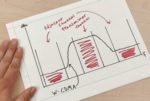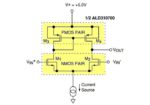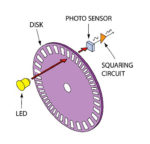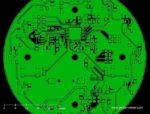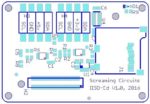When the subject is RF design, the word “power” dominates much of the discussion. This FAQ looks at some perspectives related to the measurement of this vital RF parameter. Not only is power and measuring it among the most important RF design considerations, but it is also generally difficult to assess accurately, and it is […]
FAQ
Capacitive RF MEMS switch design and simulation
By Anil Pandey, EDAboard.com member The switching is required in many applications at low as well as at high frequency. RF MEMS switches are the specific micromechanical switches that are designed to operate at RF to mmWave frequencies. MEMS switches usages some mechanical movement to achieve a closed or open circuit in the Radio Frequency […]
The RF power amplifier, part 2: considerations
Part 1 of this FAQ looked at the basic role and function of the RF power amplifier (PA). This part looks at some of the factors to consider when looking at possible PA devices. It is not a detailed run-through of the many parameters which characterize PAs, including many which are unique to the PA […]
Energy efficient route to managing low-voltage energy harvesters
It can be tough to harvest energy from innovative IoT devices such as thermoelectric generators built into clothing. A new kind of MOSFET is designed to work with the super-low voltages involved. Robert Chao | Advanced Linear Devices Inc. Energy harvesting devices make headlines because they are thought to be important for internet-of-things applications. As […]
Rotary encoders, Part 2: magnetic encoders
Part 1 of this FAQ looked at the optical rotary encoder, a low-cost, high-resolution, easy-to-use sensor for indicating incremental shaft position (although it can be “upgraded” to indicate absolute position as well). Q: What is the basic principle of the magnetic encoder? A: The magnetic encoder uses a rotating gear made of ferrous metal and […]
Rotary encoder basics and applications, Part 1: Optical encoders
Across a wide range of applications, it is necessary to need to accurately sense the motion of a rotary shaft and know its position, speed, or even acceleration. To do this, a component called a shaft or rotary encoder is added to the motor/shaft assembly. (Note that the term “rotary encoder” is often shortened to […]
Signal-channel diversity and fading, Part 2: Frequency Diversity
In Part 1 we looked at space diversity, which is the simplest form of signal-channel diversity. It has been used with success since the earliest days of wires and wired links, and it sees new uses in 5G MIMO and other advanced RF systems. We next look at the other very common form of signal-channel […]
What kind of electronic manufacturing files do you need for PCB assembly? More than just Gerbers.
Duane Benson, Screaming Circuits For PCB assemblers, manufacturing is all about taking design data and delivering good working circuit boards. Well, it can be just data — as in full turn-key, or data plus some parts, and PC boards — as in a partial turn-key or a kitted job. Regardless of whether designers send parts […]
Do you really need soldermask and silkscreen for PCB design?
Duane Benson, Chief Technology Champion, Screaming Circuits As PCB assemblers, we’ve been asked the question,”Do I really need soldermask and silkscreen?” many times. And, we’ve been asked with good reasons. To us, soldermask protects exposed metal, reduce the chance of shorts and keeps solder where solder needs to be. Silkscreen removes ambiguity, ensuring that parts […]
Radio receiver architectures, Part 2—Zero-IF and SDR
Part 1 of this FAQ looked at two basic receiver architectures: the tuned radio frequency approach (now largely obsolete due to performance shortcomings), and the superhet design which has been used with great success for about 100 years. Part 2 looks at two other architectures – the zero-IF design and the software-defined radio – which […]



